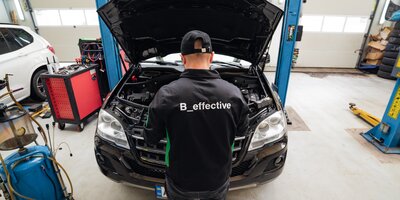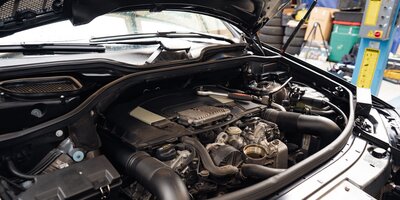Super-Knock: The Old Engine Killer is Back
Most older drivers, as well as those involved in motor sports, are well familiar with the phenomenon of engine knocking. However, due to continuous improvements in engine design and on-board control equipment, the risk of knock has been effectively eliminated, so many of you may have never experienced it, nor even heard of it. Unfortunately, old lessons seem to have been forgotten and the quest for fuel economy has spurred the engine downsizing and boosting craze. Modern turbocharged gasoline direct-injected (t-GDI) engines can pull astonishing 150+ hp from one liter of the engine displacement volume. As a result, the knock has returned, in a scarier form of a super-knock with a more scientific name of “low speed pre-ignition” (LSPI), or “stochastic pre ignition” (SPI). Ironically, the fact is that LSPI and knocking tend to become more prominent in the operating regime that is most beneficial to attaining improved fuel economy.
Let’s look somewhat deeper into the problem: In a spark-ignited internal combustion engine, the fuel-air mixture must ignite at a precise moment in the 4-stroke cycle in order for the engine to operate properly. The combustion is started by a spark plug, usually 10 to 40 crankshaft degrees prior to top dead center (TDC). This ignition advance can be controlled – either mechanically or electronically – and allows time for the combustion process to develop peak pressure at the right moment for achieving maximum engine efficiency. The knock occurs when, for some reason, the mixture ignites not when it should or when it stochastically explodes instead of burning normally. A drastic spike in cylinder pressure during the knock creates a characteristic detonation sound. Knocking is not good for the engine and the outcome can be completely devastating: cracked pistons and spark plugs, damaged rings and ring lands, buckled connecting rods, failed rod bearings etc.
To be technically accurate, one should differentiate between regular the knock and LSPI, or the super-knock. The regular knock occurs after the spark ignition took place, but the fuel-air mixture sporadically detonates in the bulk instead of burning normally. Unlike the regular knock, LSPI – which is followed by a knock – occurs before the spark ignition took place and is even more damaging. Both LSPI and regular knocking are more likely to occur at high load / low rpm conditions and while tipping-in.
In recent years, an enormous effort was made to better understand LSPI and knocking mechanisms. One can list more than a dozen of factors potentially triggering LSPI and knocking events. Apart from the engine design, high peak cylinder pressure due to engine boosting, use of low quality gasoline, use of lean fuel/air mixtures, and use of low-quality crankcase lubricants are among the factors associated with an increased LSPI and knocking risk. Unlike a conventional knock, an LSPI event cannot be predicted and corrected by adjusting spark timing, and hence the standard knock-prevention algorithms most engine control units (ECU) rely upon are largely useless.
Technically speaking, LSPI is primarily linked to engineering flows in the engine. However, the fact that the frequency of LSPI events depends on the motor oil used gave rise to a number of theories trying to link the onset of LSPI to motor oil composition. It has been reported that, certain additives, such as zinc dithiophosphate (ZDDP) and molybdenum, reduce the risk of LSPI, while others, such as over based calcium sulfonates – a common component of TBN buffer – act as LSPI promotors. Furthermore, some reports suggest that the use of synthetic base oils also reduces the LSPI risk. However, researchers from Infineum, one major lubricant additive manufacturer, have reported a correlation between auto-ignition propensity of different base oils and LSPI frequency, pointing to the opposite direction: the auto-ignition risk seems to increase from API Group I to API Group IV. This shows the complexity of the problem, with individual engine characteristics, fuel and motor oil all playing a role.
New and upcoming engine oil specifications will include a dedicated LSPI performance test sequence. We at BIZOL R&D division closely monitor current advances in understanding the LSPI phenomenon and timely adapt best practices in our product formulations. Thus, our new motor oil BIZOL Green Oil+ is one of the first LSPI-proof products on the market.

You might also like

The modern marvel of an internal combustion motor powers our vehicles, providing the strength and reliability we rely on for daily transportation. However, just like anything else subjected to constant use, motorized units experience wear and tear over time. Component deterioration can significantly impact performance and longevity. In this article, we will delve into the intricacies of engine wear meaning, explore the various causes behind it, provide actionable tips to reduce and prevent it. Furthermore, we will look at how specialized engine oils, such as BIZOL, play a crucial role in safeguarding your engine’s health. Let’s begin by understanding what engine wear is and the factors that contribute to it.

The melodious purr of a motor, the velvety transition of cog-wheel, and the elegant voyage along the expansive highway — these are the unmistakable characteristics of a meticulously calibrated self-shifting gearbox system. But what transpires when the motorized ensemble falters, the cogs gnash, and the voyage veers into an unforeseen tempest? Get into the realm of automatic transmission problems, a domain where automotive aficionados and everyday motorists alike encounter the enigmatic intricacies of this complex system.

Driving is a blend of exhilaration and convenience, but sometimes, your trusty car can hit a snag. One of the most frustrating issues is a coolant leak.
Coolant, often referred to as the versatile 'antifreeze,' assumes the uncelebrated role of an automotive guardian, ensuring your engine's harmonious operation. This unassuming fluid stands as a bulwark against the scorching summer heat and the bone-chilling cold of winter. Nevertheless, when the vigilance of antifreeze wanes, and it embarks on an unauthorized journey beyond its confines, ominous troubles come into view.

